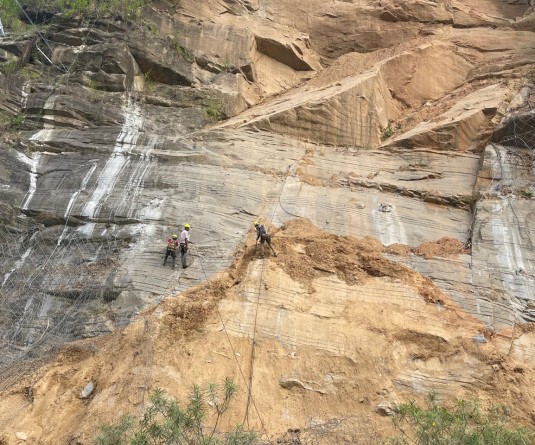
Our Correspondent
Kohima | February 14
Prof. Naushad Ali Azad from Jamia Millia Islamia University and Association of Environment & Development Research (AEDR), New Delhi has said that Act East Policy (earlier Look East Policy) is an indication of India’s renewed and larger concerns about north eastern region as well as India outward-looking orientation in foreign trade policy with respect to countries of East and Southeast Asia.
Besides trade, the policy also gives emphasis to engage culturally and strategically, he said, adding with Act East Policy in place, development of north eastern region is also expected to play the important role of a gateway or at least a window to the East and Southeast Asia.
Speaking at the two-day national conference on “Mainstreaming the North East Region” here Friday at de Oriental Grand, he said, “Evidence by now suggests that the region is still missing out the economic growth drive required to make it a good partner of the Act East Policy.”
He also stated that before north eastern region can become the gateway of East and Southeast Asia, it needs to be pulled upward towards the national levels in terms of various indicators of development so as to bring it into the economic mainstream. “For this, it is necessary that the region first undergoes a rigorous process of structural transformation by programs of industrialization and infrastructure development.”
He added that the trading capacity of the region largely depends on the state of its internal and external connectivity in terms of various modes of transportation and communication.
Talking on “Infrastructure and SME promotion for regional development,” Prof. Naoyuki Yoshino, Dean, ADBI, KEIO University Professor Emeritus said cross border infrastructure will be needed for Nagaland region. Infrastructure finance is proposed to construct good infrastructure in the region, he said, adding that not only infrastructure but also SME promotion will enhance regional development.
Manoj Pant, Prof. JNU & Secretary AEDR stated that with its limited labour force and limited arable land due to terrain or natural causes, the north eastern region needs to move out of its present dependence on subsistence agricultural production if it wants to increase the per capita of the population which is largely dependent on agriculture. “This indicates that it must move into higher valued added production of processed horticulture and floriculture products,” he said.
PKH Singh, advisor (Transport), NEC, DONER, GOI said connectivity became an issue for the north eastern region after the partition of the country and East Pakistan was carved out of India. He said the GDP also fell down over the period as a result of the same. It was only after the 10th Plan that concerted effort was put in place by the central government and special schemes were formulated - SARDP-NE, Arunachal package, National Projects for Railways, NE funding for airport development, declaration of National waterway-2 for Brahmapura and various other schemes for the Hills states. Although the programmes were well conceived, due to lack of knowledge of the hill region by the consultants who framed the DPR, land rules of the area, environmental and forest issues, adverse weather conditions, security scenario in the region and logistics constraints, the programs have been lagging behind considerably and also leading to the cost overruns.
“The connectivity of the state capitals by air, rail and four lane roads as also the district headquarters by two lane is a distant dream,” he said.
Prof. Chandni Raina, IES, CWTOS, Ministry of Commerce, GoI, Delhi said the north eastern region is rich in agricultural products but despite this, till now only 15 GI’s (of which 10 are agricultural products) have been registered from this region.
Touching on trade corridors, Alokesh Barua, Prof. JNU and AEDR, said that importance of trade route from the development perspective of the North East should not be over emphasized since there is hardly anything that the North East presently exports to the East and Southeast Asian region.
He said the North East has a locational advantage in terms of its proximity to the region; but such an advantage cannot be easily transformed into trade advantage without prior development of the North East into a production hub for industrial products based on its comparative advantage.
“This would require an expansion of the internal size of the market to realize economies of scale. Herein lies the role of improving and expanding at a rapid pace the scope for inner connectivity within the North East,” he said.






